Since you asked...Corner 3 at Mosport this past August with the BMW CCA Trillium ADS


Photography Credit: Photosbyjuha.com
[Editor's Note: This article originally ran in the February 2013 issue of Grassroots Motorsports.]
Where every basketball court, football gridiron and soccer field is built to the same regimented standard, motorsports venues feature so much variety: Some tracks are tight and technical, others are big and thrilling. It’s those thrilling tracks that have defined our scene.
Sure, the tight circuits can be fun, but close your eyes and picture a legendary motorsports scene. Whether it’s Can-Am cars at Bridgehampton, dueling GTP prototypes at Sebring, or IndyCars at Laguna Seca, it’s the sweeping, adrenaline-triggering tracks that produce motorsports memories that are larger than life.
Fortunately, these epic tracks aren’t the sole domain of professional motorsports. Most of them—well, the ones that haven’t been consigned to the history books—host all kinds of events, from open track days to club races.
The trick, of course, is quickly getting up to speed. That’s where we can help. Sure, anyone can list the land’s most epic tracks; we can also offer some professional help on how best to tame them.
Just don’t forget to send us some on-track photos, okay?
Monterey, California /// mazdaraceway.com /// 2.238 miles /// 11 turns /// opened 1957

Laguna Seca has long corners, so patience is very important. It’s easy to pick up the throttle a bit too soon and create midcorner understeer. Most of the time, you want continuous deceleration until you get to the red curbing right at midcorner, then pick up the throttle. This will allow for a smooth, full-throttle transition.
Laguna Seca is one of the most epic tracks in North America. It has so much character with the various types of corners, elevation changes, speeds and the rush of the almighty Corkscrew—see Bryan Herta. There are only a few tracks that I consider extremely technical, and this is definitely one of them. It’s a place that you have to respect as one of the premier road courses in the world.
Understanding elevation change is key to gaining time at Laguna. Try to find the part of the track at entry, midcorner and exit that suits your car’s grip level. It may not be where you would think. For example, in Turn 9, it’s typically better to stay a bit tighter inside on entry, as it allows the car to drift to the right line as you go down the hill.
There is a mean compression corner on the circuit at Turn 6, one of the toughest turns on the track. You have to understand the right time to pick up throttle during the compression—too early, you will have to back out on exit; too late, you’ve hurt exit speed—both of which relate to lost time going uphill toward the Corkscrew. The goal is to enter at a speed that allows you to feel the compression under control. This will allow you to figure out the timing of throttle application.
Turn 2 has an interesting entry that creates the need for constant radius in the wheel while in the brake zone. You actually start braking while letting the car arc through the zone. The key is to arc the car so you can hit the first curbing and continue to trail-brake into the corner. This will make for an easier transition before the second apex.
During the start of a race, make sure to watch the outside line into Turn 2. You’d be surprised how many people stack up on the inside during braking. I’ve passed many cars using the outside to my advantage. The double apex is slow enough that you can hang on the outside without losing a position.
Photography Credit: David S. Wallens
Two simple syllables sum up Weathertech Raceway Laguna Seca: Corkscrew. This left-right combo may not be so thrilling if it weren’t for one additional feature: The track plummets 59 feet while covering only 450 feet horizontally. Two-time Pirelli World Challenge champ Lawson Aschenbach has stood on the top step at Mazda Raceway Laguna Seca.
Photography Credit: Photosbyjuha.com
Sebring, Florida /// sebringraceway.com /// 3.7 miles /// 17 turns /// opened 1950

One element that makes Sebring epic is that, unlike Alan Wilson’s giant autocrosses, it has long straights and plenty of places to overtake. It’s rough, it’s fast, it’s challenging. It has slow corners, off-camber corners and the world’s largest if not most difficult hairpin, Turn 17.
Sebring is a true endurance track. You can run multiple classes for hours, and traffic doesn’t need to be an issue. Just be patient for 10 seconds or less, and I’ll show you a passing opportunity. Plus, due to the old, harsh concrete, if you can endure here for 12 hours, you can pretty well run 24 anywhere else in the world.
Turn 1 is a blind, fourth-gear, bumpy-but-grippy, concrete corner where you slow just enough to drop a gear, aim for the blind apex (the wall), and balance the car with progressive throttle as your site picture develops and you unpucker some of the seat cover.
Late-apex on the carousel (Turn 5), and shift to fourth before the bridge.
There’s an undulation before Turn 7, so brake accordingly.
If it’s not damp, Turn 11 is flat-out.
Turn 17, the world’s largest hairpin, requires a lot of confidence as you turn in flat-out in most cars, brake, and downshift one or more gears, all while balancing the car over the bumps; then, you’re trying to accelerate before the drive-over bridge for an extremely late apex that you can’t see. The goal is to go in as hot as possible, redirect the car, then power out as hard as possible. I, personally, have done this turn correctly twice in my career. Oh, and it’s a big passing zone.
Photography Credit: J.G. Pasterjak
After World War II, air base race tracks were fairly common. Now, for the most part, they’re a memory—except for Sebring, that is. Sure, Sebring is still bumpy and hard on equipment, but it’s also a throwback to a more thrilling era. Terry Earwood has seven big wins at Sebring. Today, the facility serves as his classroom, as he works with the Skip Barber Racing School as well as NARRA. His advice here on gear selection is based on a Mazda MX-5, but it still applies to most sports cars.
Photography Credit: Photosbyjuha.com
Local Color: When shopping hotels, don’t discount the trackside Château Élan. A few times we have found that the rates match those in town.
Alton, Virginia /// virnow.com /// 3.27 miles /// 17 turns /// opened 1957

To me, to be truly epic, a track needs to be challenging but not annoyingly technical, fast enough to separate the men from the boys, flow smoothly with and incorporate the natural terrain and, most importantly, have at least one section where you may be able to stay flat on the gas if all goes well. VIR’s Full Course earns high, if not top, marks with all these criteria.
VIR has a lot of flow. Seventeen turns sounds like a lot, but there are lots of grouped sections that all go together really well, making it feel a lot more like nine or 10 sections. If it’s your first time, don’t sweat the turn count.
Eyes up! With so many sections that link together, it is easy to get behind. Looking up and down the track will keep things flowing smoothly.
It’s easy to factor in the loading—or lack thereof—to your car during elevation changes in some turns because the change is big and very obvious. Beyond the few turns with big elevation, there are a lot of rolling changes in multiturn sections that are less defining, but no less important.
Just as you are celebrating your exhilarating run through the Uphill Esses, you will tap the brakes and dive into the blind left-hand South Bend. Use all of the track at track-out, but work your way into it and use the smooth curbing past the asphalt as room for error. Never pinch the car to keep it on track here, or you will visit the track-left Armco. If you do decide to drive off to the right, keep your eyes up for the drain inlet—and avoid it.
The fastest lines at VIR are usually the straightest ones. This should be obvious, and of course it applies to the Flat Esses and Uphill Esses, but also revisit the thought on the front and back straights.
Photography Credit: Scott R. Lear
Virginia International Raceway is a ghost track that has come back from the dead. After a heyday in the 1960s, VIR closed in 1974. More than 15 years passed before it awoke from its slumber. James Clay, founder of BMW tuning shop BimmerWorld and also the team’s lead driver, calls VIR his home turf.
Photography Credit: Kevin Adolf
Local Color: Consider booking one of the onsite lodging choices—there are three options. An extra 30 minutes of sleep on a busy track weekend is a nice treat.
Braselton, Georgia /// roadatlanta.com /// 2.54 miles /// 12 turns /// opened 1970

Road Atlanta is an epic track because of the flowing high-speed corners, massive elevation changes, and bumps/curbs which give the track its character.
Use medium brake pressure for Turn 1, which will help you roll speed into and up the hill. It is best to turn in early with more speed and allow the compression of the hill to help the car turn as you start to feed in more throttle toward corner exit.
Turn 3 can be very tricky. You want to set up the car as straight as possible for the brake zone so that when you apply the brakes, the car will be predictable. Using the right amount of apex curb is critical here—too much or too little will result in a lot of airtime for your right-side tires, and you will be losing time to your competitors. I find that there is a sweet spot right in the middle of the curb that results in the least amount of airtime.
Turn 5 is another one of Road Atlanta’s unique and tricky corners, one of the toughest and most rewarding when you get it right. The car again needs to be set up as straight as possible to have good stopping power as well as predictability. There is a bump right at turn-in that can greatly upset your car—there is no avoiding it, one just needs to be mindful of it. Once you do get turned in and down to the apex—I do not suggest making a habit out of using the apex curb here—maintenance throttle needs to be applied quickly because the high load in this corner will decrease your momentum quickly. There is a lot of exit curbing here, so put the hammer down and use it! But do not dip your outside wheels in the sand because it will pull the car toward the quickly approaching wall.
A lot of people call Turn 6 a throwaway corner, but in my book there is no such thing. One of the more straightforward corners on the track, it appears to be a simple right-hander with some banking. Getting a little closer to your competition here for that all-important draft out of the next corner and down the long back straight is key to getting by them at the end of the straight. If you are in a car that exhibits high front-tire wear throughout a race, Turn 6 is a great place to slide a little less, saving some tire without losing much time.
Turn 7 is all about exit speed: Give up a little entry speed with the idea that you will gain some on exit. A late turn-in is key to helping exit speed and allowing a smooth transition off the brakes and back to the loud pedal. I generally don’t utilize the apex curb as I find it is too high to do any good, but feel free to run all over the exit curb.
You’ll reach top speed at the track as you enter 10a. Stomp on the binders as hard as you desire. Don’t roll too much entry speed into 10a because 10b is more important. Using all of the apex curbing in 10a—but avoiding the hole on the inside of it—track out no farther than midtrack. In a momentum car, I prefer to get to about middle track, but before I transition my hands to make the right for 10b, I keep turning left for as long as I can to make the radius of 10b greater. Again, I use a lot of the apex curb but no exit curb, as it is very aggressive and will only slow the car down and knock the brake pads away from the rotors.
When exiting 10b, look up at the bridge and you’ll see three squares: yellow, red and white. Driving any farther left than the yellow square will make for a pucker moment on the other side of this enormous hill. I have, on occasion, gone all the way right of these squares while hoping to cover less distance down to the turn-in point for Turn 12—sometimes you need to search for that extra hundredth.
If you are not flat-out for Turn 12, I would advise making your speed adjustment sooner than later and using some maintenance throttle to balance the car through the apex. Although I have seen it done, I do not prefer to use the apex curb in Turn 12 because it is very large and even in the slowest car this corner is approaching triple-digit speeds.

Photography Credit: Al Merion Padron
Road Atlanta’s infamous dip may be no more, but the track still offers major elevation changes, high-speed turns and fast straights. One of its old-school ads summed up the facility nicely: If you can race there, you can race anywhere. Reigning Pirelli World Challenge Touring Car driver Michael Cooper knows Road Atlanta well, scoring a double win at the track en route to the 2011 Playboy Mazda MX-5 Cup championship.
Photography Credit: Photosbyjuha.com
Local Color: Everything you take to Road Atlanta—your car, your clothes, your shoes—will return home tinged with Georgia red clay. There is no way to fully remove this substance, so just plan accordingly.
Bowmanville, Ontario /// canadiantiremotorsportpark.com /// 2.459 miles /// 10 turns /// opened 1961

Mosport is one of the most challenging tracks in North America. Nestled in the picturesque, rolling countryside north of Lake Ontario and about an hour east of Toronto, it’s a high-speed circuit that rewards commitment. It’s also what’s often referred to as a high-consequence track, which means if you get it wrong, it’s probably going to be painful—and hopefully only financially.
In a touring car like one of our Honda Civic Sis, you’ll have a short lift of the throttle to settle the nose of the car before getting back on the power in advance of the apex for Corner 1. In a more powerful car you’ll likely brake a bit, unless you’re in a high-downforce vehicle; the ALMS prototypes are flat down the front straight and all the way to the entry to Corner 5. In Corner 1, you can use all of the track to the wall on the right. Depending upon the car you’re in, straddling the apex curbing is the preferred line.
Corner 2 is one of those icons of motorsport, alongside Laguna Seca’s Corkscrew and the final corner at Road Atlanta. It’s a downhill, double-apex, left-hand corner with a pronounced dip; when you’ve got the line down, that dip tells you the car’s planted and you can head for the second apex and begin to feed in the power. Done right, the hairs on the back of your neck stand up.
Corner 3 is a blind, increasing-radius right-hander. It’s easy to turn in too early or late here; watch for the little nub on the inside curb for the right spot to apex.
Heading down the short straight to the left-hand Corner 4, it’s wise to leave a half- or full-car width on the right side. For our cars, this corner is flat-out, and you end up at the bottom of the hill carrying some pretty serious speed.
Then it’s a downshift and up the 20-foot rise into Corner 5. This is composed of two slow, right-hand bends (5a and 5b) and a slight left-hander (5c). Corner 6 is the critical one, as a good exit here will allow you to carry speed all the way down the long back straight—which, with two additional slight bends, isn’t really all that straight.
The end of the back straight opens into Corner 8, an extremely quick, decreasing-radius right-hander. In our cars, a quick downshift in the space between Corners 8 and 9 gives you good torque to carry through the left-hander. Then a quick stab on the brakes sets you up for the right-hand Corner 10 and on to the front straight.
Photography Credit: David S. Wallens
While many of the older tracks that remain have been softened—neutered, if you will—over the years, the track originally known as Mosport has soldiered on largely unchanged. It’s just as fast and hairy as it ever was. Karl Thompson heads up Compass360 Racing, and the Honda Civics fielded by this Canadian outfit have been front runners in both Pirelli World Challenge as well as Grand-Am Continental Tire Challenge competition.
Photography Credit: Mark Weber
Local Color: Interestingly, there’s been a revitalization of Mosport, which was purchased a year ago by a consortium headed by Ron Fellows. A lot of work was undertaken in the spring of 2012, including the construction of a new tunnel that allows transporters access while the track is active. The work continued through the fall while the track was resurfaced. Some of the nuances may be different when we show up to the facility in the spring, but it’ll still be Mosport—or the Canadian Tire Motorsport Park, if you like—one of my favorite tracks on the continent.
Elkhart Lake, Wisconsin /// roadamerica.com /// 4.048 miles /// 14 turns /// opened 1955

Road America is a simple, fast track. For cars with more grip than grunt, the longest “straight” in North American road racing starts at the exit of Turn 8, travels through the Kink and Kettle bottoms, and reaches all the way to the braking zone for Canada Corner. For those with horsepower, Road America is Mecca, full of long straights capable of topping out most any car.
As with most tracks, make sure you hit every inside curb, establish a rhythm that can be sustained, and control your speed without losing momentum at the slowest corners for the best performance in any car.
Turn 1 is way faster than it looks: more open than 90 degrees, flat, level and friendly curbing at the apex and at track-out. Pay more attention to brake release than brake application. This is one of the greats, a place where you always say, “I could have gone faster,” as you exit nearly every time. Most drivers brake too early and release too late. Focus on getting rid of wasted time here by inching the entire, concentrated brake zone closer to turn-in.
Turn 5 and Turn 12 (Canada Corner) are the two best—and longest—braking zones on the track. A high-speed entry and long, smooth, maximal braking coupled with the road leveling out at and past the apex offer increasing grip and confidence. Be sure to slow the car down enough to allow it to turn first, then commit to power.
Turns 6 and 7 are where the great are separated from the good. Into Turn 6, a blind entry combined with a light nose make braking and turning a real challenge. Know that if you make it down to the flat-curbed apex, you’ll have a lot of wiggle room available using the long and expansive exit curb. Drive on a diagonal from the exit to turn-in for the fast, flat Turn 7, another bend in the road that requires decisive, yet smooth, steering input while you’re fully (or nearly fully) committed to the throttle.
Much more important and leading up to the Kink is the marvelous Carousel. Try to hustle in and hustle out, with as short a breath or “attitude correction” as you can muster in the middle. Know that as you approach the inside curb (and you do want to nuzzle it), that grip will substantially increase. That is your signal to go. If you screw up at the exit, drive straight off.
Let’s get the anxiety out of the way first: The Kink is just a bend in the road, albeit a fast one. Get your speed adjustment done, whatever it is and however you do it, before your turn-in and be back on power at turn-in.
Turn 13, now with a more open visual sight line without the famous Billy Mitchell Bridge, is another spot similar to Turn 7. Those with the best vision of where they want to go will carry enough speed in to be carried all the way out (and then some). It’s faster than it looks!
Photography Credit: Per Schroeder
Like Mosport, Road America is another true throwback to the road courses of the 1950s. The facility has been upgraded, but the track itself remains as it was during the thundering ’60s. Vintage racer and driving coach Peter Krause has run from one end of this land to the other, but Road America’s high speeds and fast corners offer a special thrill.
Photography Credit: Photosbyjuha.com
Local Color: Local knowledge can be found occasionally from longtime Skip Barber instructor and current track ambassador “Duck” Waddle (yes, that’s his name), who knows every inch of the 4-mile circuit. Look him up if you’re there. Be sure to sample the brats, and don’t miss the local watering hole, the legendary Siebkens.
Lexington, Ohio /// midohio.com /// 2.4 MILES /// 15 TURNS /// opened 1962

The most vital part of the track is the between Turns 5 and 13—basically, all the curvy parts.
Turning in too early for the apex at Turn 1 will set up the car on the curbs and point it in the right direction—you want to do this. It’s hard, though, to convince yourself to do it, as the natural inclination is to turn in late so as to avoid the bridge.
The Keyhole that is still used for some club racing weekends—with its right, left, left, right combo—is also very important since it feeds the turn that leads to the longest straight on the track. Grip can be tough to find here, especially during the hot summer months.
Assuming the track is being run without the optional Keyhole Turn 2 is a double-apex turn. By turning in and then apexing off the top curb, you can carry more speed into the entire turn.
Get very wide when coming down the hill, and then turn in to 6 very early so you are pointed down the track to Turn 7. Turn 6 is not about going fast, but getting through it and being pointed in the right direction as you exit.
This is probably the second most important turn on the track. What happens in Turn 8 determines how Turn 9 goes. It is important to have the car pointed down the track so that its momentum can be carried over the apex as the track falls away.
There is a slight rise and fall from Turn 11 to 12, so you have to start your braking for Turn 12 before the falloff. Once you have the initial speed taken off, you can then let the car float into the turn while braking less.
Photography Credit: Photosbyjuha.com
The Mid-Ohio Sports Car Course is an old-school track; it winds and follows the natural terrain. It’s from an era that predates CAD-CAM, focus groups and motorsports country clubs. Drivers need to be on their toes. Longtime pro driver and GRM contributor Will Nonnamaker calls Mid-Ohio his home track: “Mid-Ohio is all about patience and turning in early to apexes with slow hands.”

Photography Credit: Chris Clark
Local Color: During big race weekends, look for the local chamber of commerce tent in the infield. Inside you’ll find friendly faces, free Wi-Fi, menus to area restaurants, and even something to nosh.
Watkins Glen, New York /// theglen.com /// 3.4 miles /// 11 turns /// opened 1956

Here are a few general things to keep in mind when driving the Glen:
The esses—and I include Corner 2 as a part of the esses—are the hardest parts of the track to master, but only in a high-horsepower car. In many cars, they are taken flat very easily, but in a high-power car they are one of the greatest tests of a driver’s skill and bravery anywhere in the world—right up there with classics like Eau Rouge at Spa.
Similar to Eau Rouge, this section can be taken flat or very close to flat, but it requires massive commitment and using up every inch of the track. This is very daunting because the fastest section is also the narrowest part of the entire circuit—with the blue Armco being the exit point.
The trick is to allow the car to run on the positive camber side of the road through Corner 2, go up the hill to Corner 3, and to the exit of Corner 3. Many people drive a more squared-off “DE”-style line through here, but if you really look at the road there are some massive camber changes happening. Squaring off this section actually upsets balance more than the extra turning radius is worth.
Unique to the Glen is the fact that all the turns pretty much represent a big chunk of sector time, so there really aren’t any throwaway corners here. I would say that in a high-horsepower car, the esses—again including Corner 2—are the most important, as they determine your speed down the back straight and the longest sector of track. However, in many cars the esses and Corner 2 are flat, in which case the most important turn becomes Corner 1.
The line through Corner 1 is pretty straightforward and easy to see. A common trick is to create a big arc and use up all of the exit curb—and then some. The hard part is getting the correct entry speed and timing the jump back on the throttle. Slow in, fast out isn’t good enough here. We need every ounce of momentum to drive up the hill, but we also need full power as early as possible.
There is, however, one little tip I can share: Obey the camber. The track is downhill on the entry with big camber in the middle; from the apex out, it’s uphill. This means that you can turn in early and use slow hands for the downhill part. As soon as the front tires reach the camber and uphill part, then steer more. This, in turn, creates a lot of compression and grip. Use it to your advantage.

Photography Credit: Melissa Smith
Sports car racing took root in the upstate town of Watkins Glen, New York, when Cameron Argetsinger and crew held a race through the town’s streets in 1948. A few years later, the need for a real race track became apparent, and the track now known as Watkins Glen International was born. Pro driver and longtime coach Aaron Povoledo refers to the Glen, Mont-Tremblant and Mosport as the “original three,” challenging tracks that introduced Americans to Formula 1: “All were built before 1964 in the spirit of the fast, flowing circuits of Europe. It is fair to say that these old-school tracks challenge a driver’s skill and bravery unlike anything else in modern circuit design.”
Photography Credit: Photosbyjuha.com
Local Color: American sports car racing has strong roots at the Glen, so next time you’re up there take a few minutes to retrace the original street circuit—at legal speeds, of course. Then book some time for the International Motor Racing Research Center at Watkins Glen—a giant living library dedicated to American motorsports. They even have GRM in their collection. Details: racingarchives.org.
Like what you're reading? We rely on your financial support. For as little as $3, you can support Grassroots Motorsports by becoming a Patron today.
Well, if we're sharing Laguna photos. :) This was the BMWCCA event earlier this year, right before everything went nuts with Covid-19
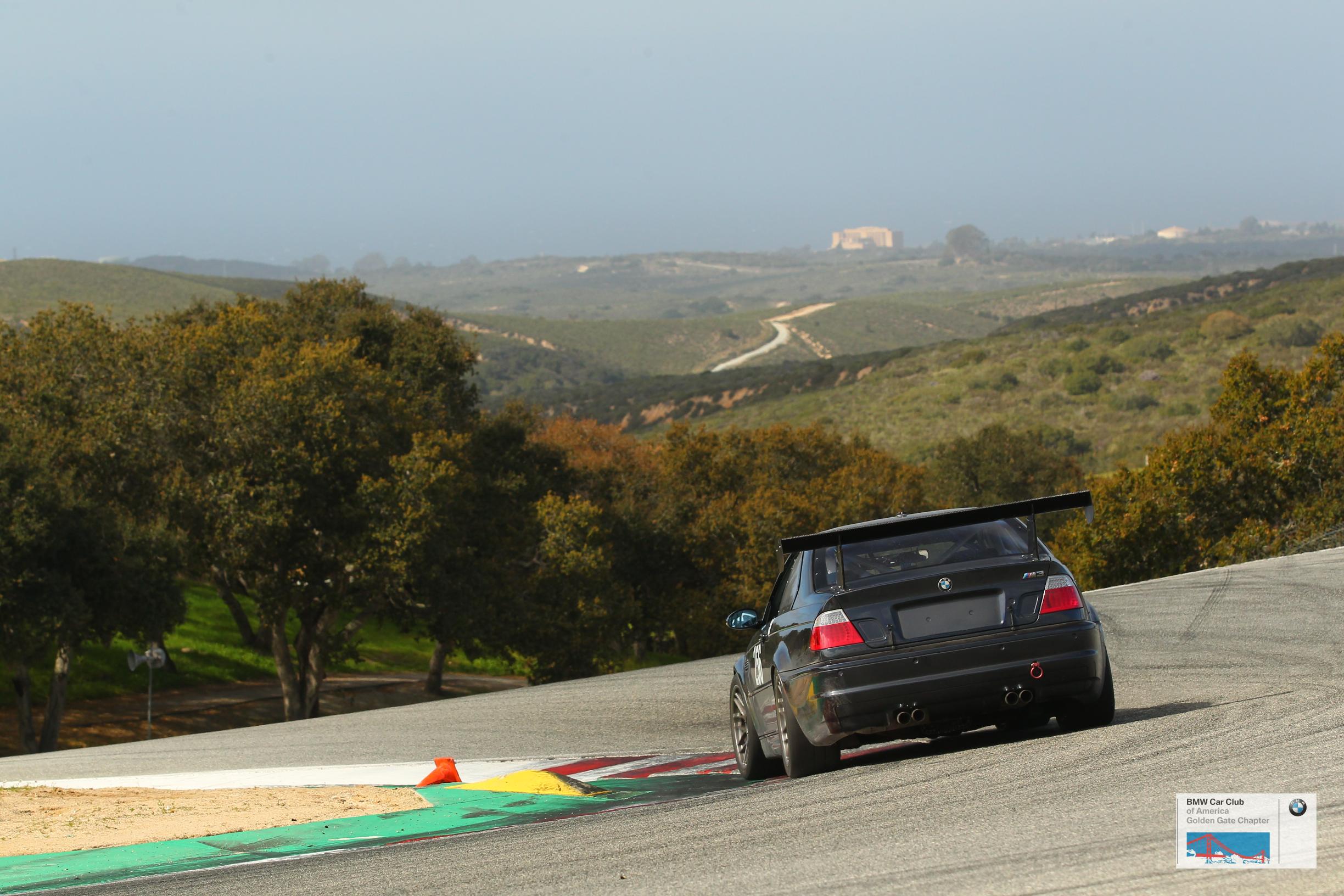
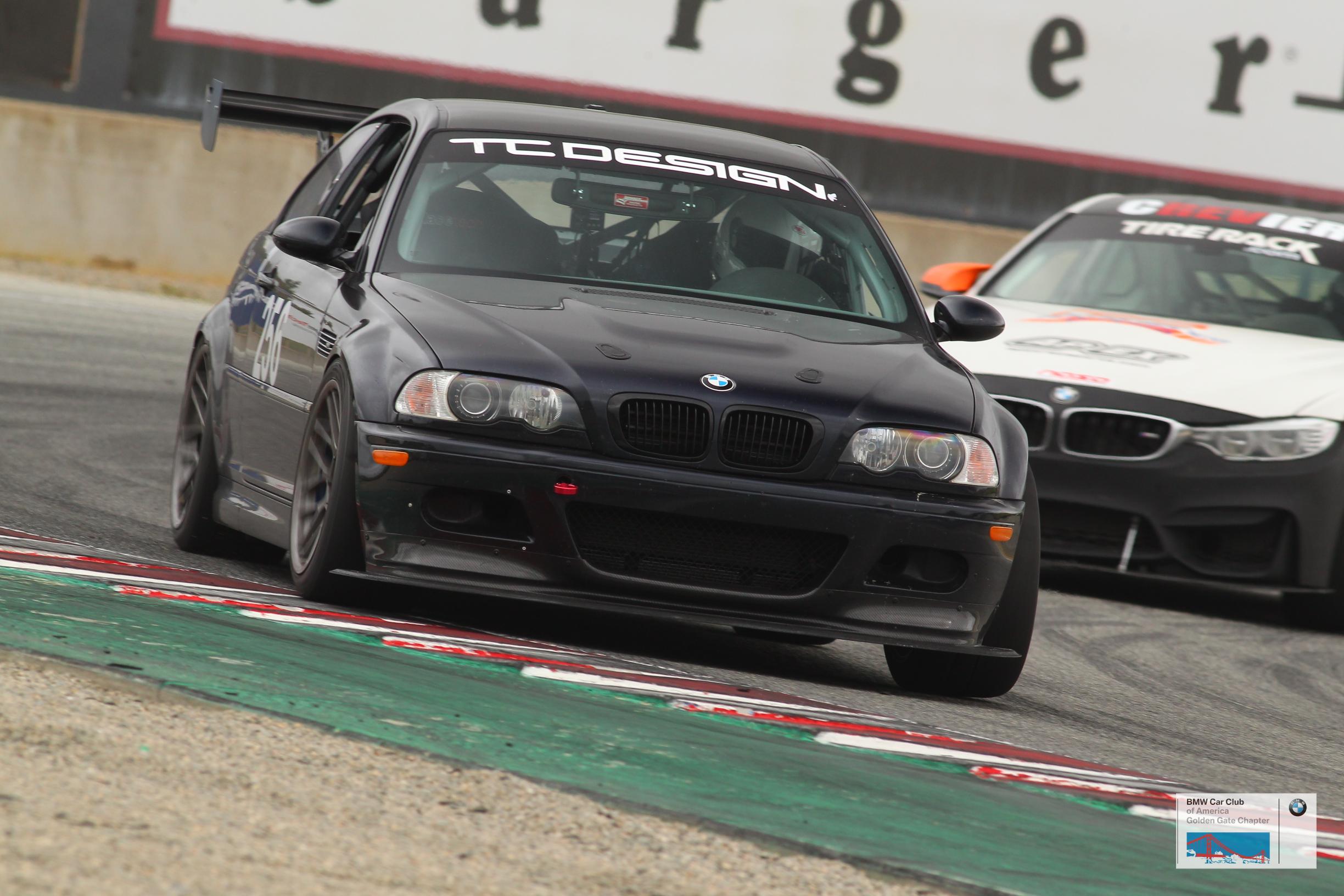
I think Laguna will always be my favorite track... it's just such an icon here in the West. After riding the track a number of times on two wheels, I finally got there on four for the Miata weekend in '17.
Leading the pack through T4
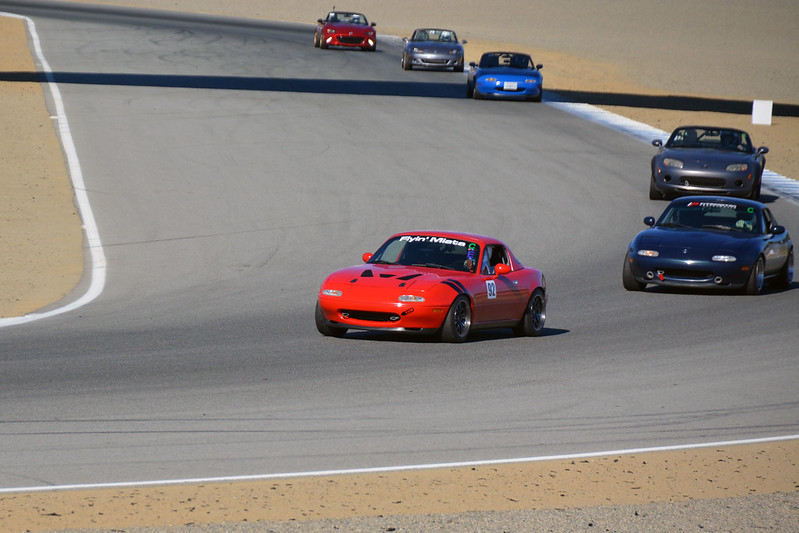
Down the Corkscrew
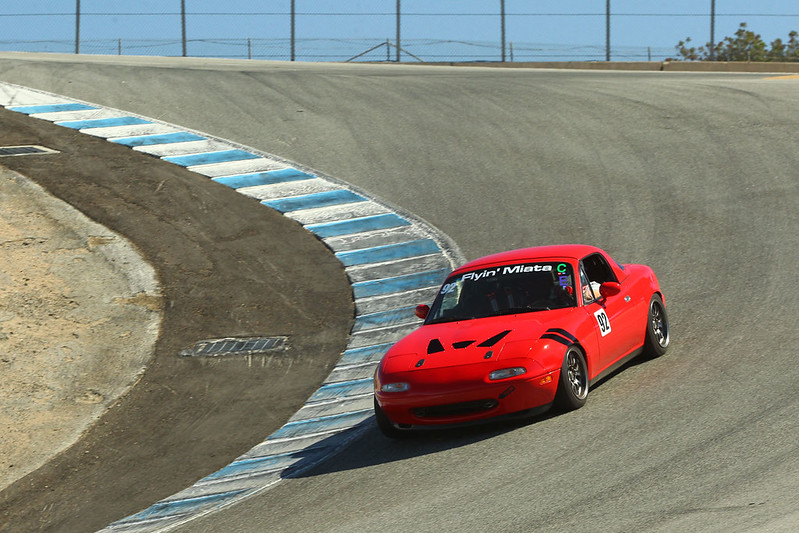
We're looking forward to visiting some of the big Eastern tracks in retirement in a few years.
Road Atlanta and Sebring are amazing.
Sebring is incredible. It was my first time racing a track that I previously knew from a video game, and that somehow made it so much cooler. Going through 17 and 17a in the wet as the square concrete patches bump you about is incredible and terrifying. Also, the braking lines get really slippery when wet.
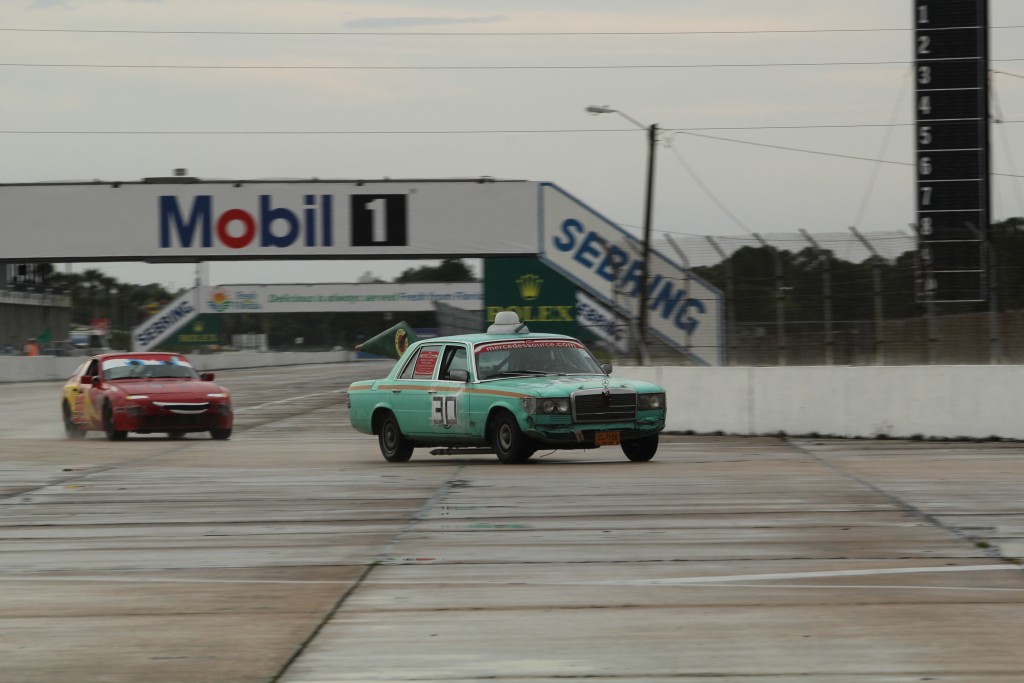
I've gotten to drive both our W123 and a friend's XJ6 at Road Atlanta. Really like the whole section from 1-5. It was cool learning just how fast I could get going through there. I'm sure I'm still leave seconds on the table. Turn 12 freaks me out with that concrete wall staring at you, especially as both times I've been the track was wet and cold(snowed).
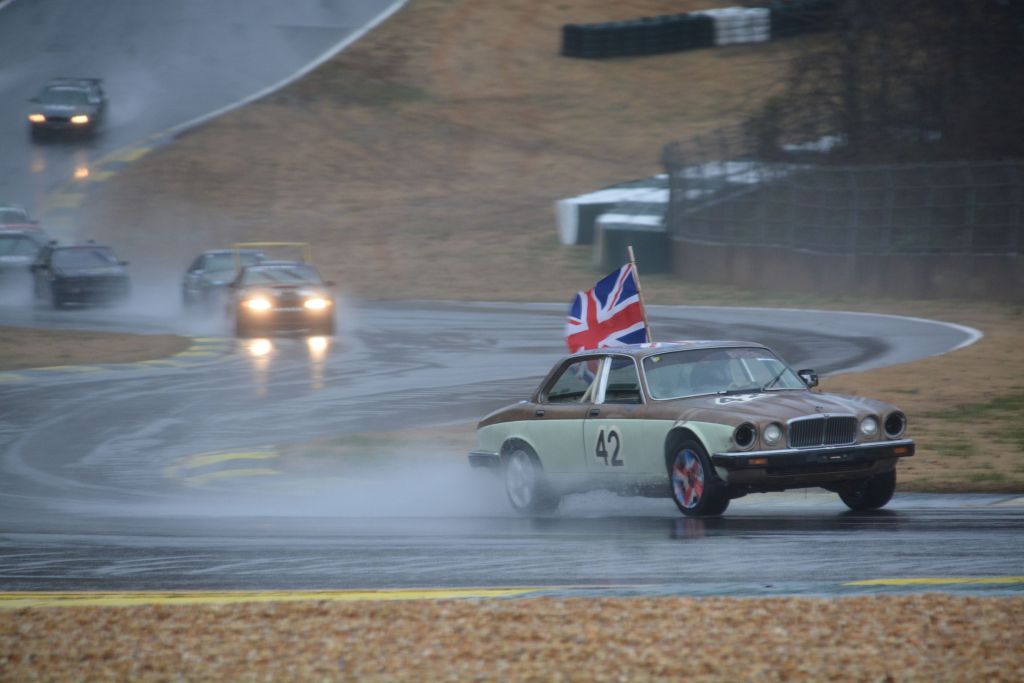
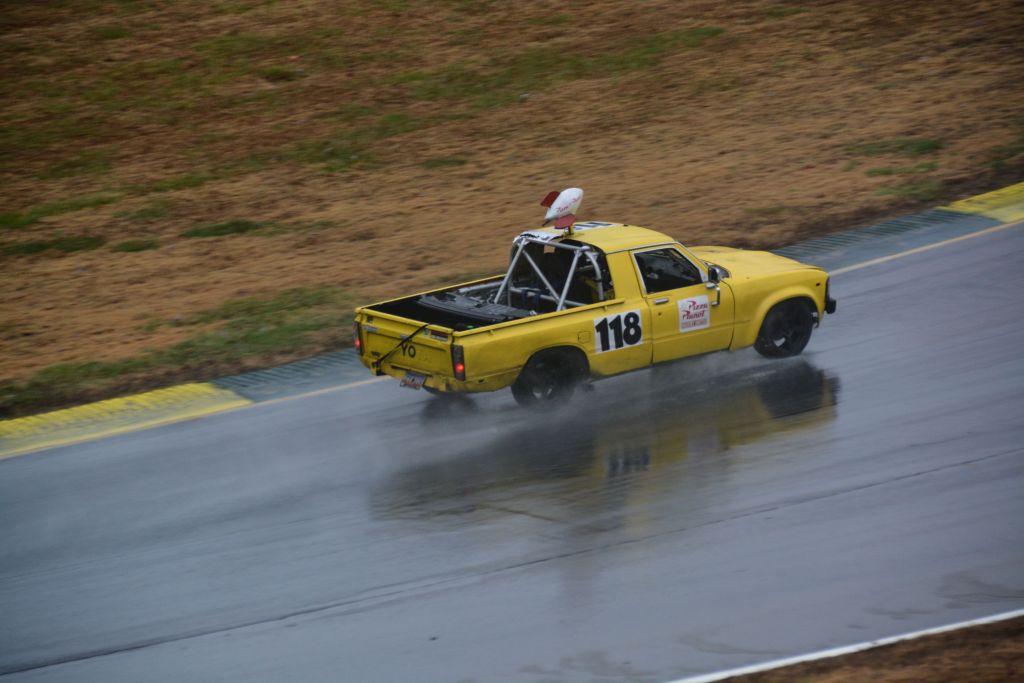
I was hoping for more than some insight into just turns 1, 2, and 3 at Watkins Glen.
I get that high HP cars need fine control up the esses and low power cars need to carry as much speed as possible exiting turn 1 in order to maximize speed all the way up the back straight. I probably could improve my line through turn 1 a bit but I doubt I would gain huge time there even carried out to the end of the back straight.
My biggest problem has always been the toe of the boot. My low power car just seems to lose all speed as it hits the hill in that corner and every line I attempt to take on that corner just feels wrong.
Maybe I'm actually losing more time through the high speed turns but emotionally it feels like that turn is what is killing my lap times. (a bunch of almost right corners and one wrong corner)
Great article - really useful!
Only one issue - soccer fields are not 'built to the same regimented standard'.
Must be rectangular not square / length 100yds - 130yds / width 70yds - 100yds... ![]()
Wrighty said:Great article - really useful!
Only one issue - soccer fields are not 'built to the same regimented standard'.
Must be rectangular not square / length 100yds - 130yds / width 70yds - 100yds...
Fair, but still a long ways from the almost completely freeform nature of racetracks.
Road America, apex turn 3 several years ago with the Badger Bimmer chapter of the BMWCCA.
If i remember correctly, this was my first weekend as a qualified instructor. I took advantage of all the track time available to me and went home on a flatbed.
The last session of the day, I cooked the brakes coming into Canada Corner and went straight off into the kitty litter. One bumper cover and power steering cooler later I was back at it, with a StopTech BBK :)
Moral of the story? Keep an eye on your brake pads!!

I think this is track out of the carusel, setting up for the kink

Displaying 1-10 of 10 commentsView all comments on the GRM forums
You'll need to log in to post.